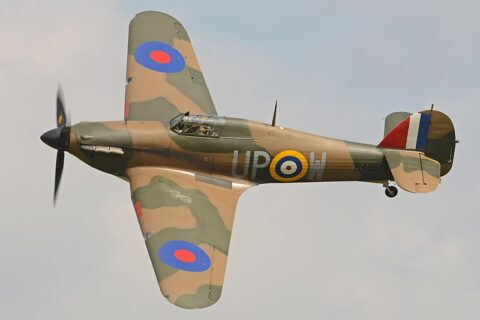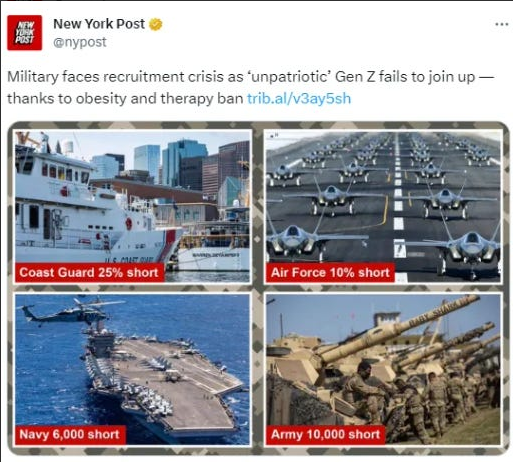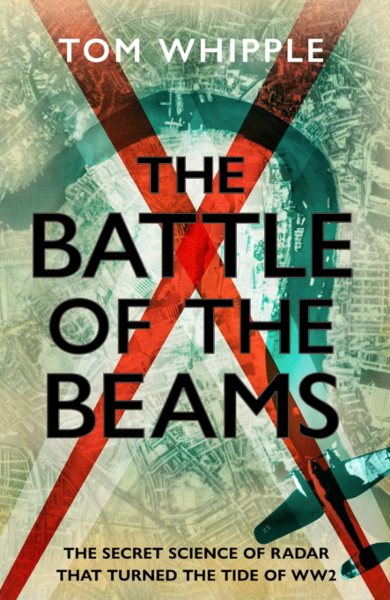Forgotten Weapons
Published Nov 15, 2023First produced in 1902, the Madsen was one of the first practical light machine guns, and it remained in production for nearly 5 decades. The Madsen system is a rather unusual recoil-operated mechanism with a tilting bolt and a remarkably short receiver. The most unusual variation on the system was the belt-fed, high rate-of-fire pattern developed for aircraft use. This program was initiated by the Danish Air Force in the mid 1920s, and several different patterns were built by the time World War Two erupted.
The model here was actually a pattern that was under production for Hungary when German forces occupied Denmark. Taking over the factory, they continued the production and the guns went to the Luftwaffe for airfield defensive use.
In order to use disintegrating links instead of box magazines, some very odd modifications had to be made to the Madsen. One set of feed packs are actually built into the belt box itself, and the gun cannot function without the box attached. The only feasible path for empty link ejection is directly upwards, and so a horseshoe-shaped link chute was attached to the top cover, guiding links up over the gun and dropping them out the right side of the receiver. Very weird!
While several thousand of these were made under German occupation, very few survive today and they are extremely rare on the US registry.
(more…)
February 20, 2024
Belt-fed Madsen LMG: When the Weird Get Weirder
December 3, 2023
Was Hürtgen Forest Worth it? WW2 – Week 275 – December 2, 1944
World War Two
Published 2 Dec 2023The bulk of the fight for Hürtgen Forest is now over, and today we look at the results. We also look at Soviet plans for their January offensive. In the field this week, the Red Army is still fighting in Hungary, the Allies are still trying to reach the Roer River in the west, and in the Pacific Theater the kamikaze menace is wreaking havoc with Allied scheduling.
00:00 INTRO
01:06 Soviet Offensive Plans for 1945
03:12 Red Army attacks in Hungary
06:19 The Port of Antwerp is clear for use
07:23 The Battle of Hurtgen Forest is Over
12:20 Allied advances to the Roer
14:19 Tension builds in Greece
15:32 The aerial situation in the Philippines
21:36 CONCLUSION
(more…)
December 2, 2023
Original FG42: A Detailed Comparison of the 1st and 2nd Patterns
Forgotten Weapons
Published 16 Aug 2023Today we are looking at examples of the first (Type E) and second pattern (Type G) FG42, comparing their construction and disassembling both to get a close look at the internal differences. Despite sharing the basic mechanism, these two models share zero parts in common, not even the bayonets or magazines. We will also discuss the developmental path of the FG-42, and why the majority of production was the 2nd pattern but the vast majority of combat use was the 1st pattern …
(more…)
November 24, 2023
The Man Who Started the Cold War
World War Two
Published 23 Nov 2023What if I told you that a new conflict will sweep the globe in less than a year? It will open not with gunshots but with silent, shadowy espionage. The man who will kick off the Cold War is a quiet Canadian pilot, millionaire, and spymaster. A trusted aide to Churchill and FDR. I bet you haven’t heard this name before: William Stephenson.
(more…)
November 16, 2023
The US military may need to find a modern-day Patroclus
John Carter explains why the sudden swerve in US military recruitment from all-diverse-all-the-time to an ad that might have been created in the 1960s … and why it still won’t help:
Sing, o muse, of the wrath of Achilles, son of Peleus, that brought countless ills upon the Achaeans …
Thus opens the foundational epic of European civilization.
Achilles is angry because his woman, Briseis, has been appropriated by Agamemnon, the leader of the Greeks. He expresses this discontent by going on strike. While the rest of the Greek army fights and dies outside the walls of Troy, Achilles lounges in his tent, content to sit out the combat until Agamemnon comes to his senses and returns his war bride. If Achilles were simply any other warm body with a spear, this wouldn’t be such a big deal, but he is Achilles – the greatest warrior of the Heroic Age. Without him, the Greeks are at a severe disadvantage. Achilles’ petulance is therefore a problem for Agamemnon.
The lesson is hardly a subtle one. Kings and generals need to keep their soldiers happy. They especially need to keep their best soldiers happy. If they don’t – for instance, by taking their women from them – morale will suffer, and they may well find themselves without the crucial support of their warriors when it most matters.
Washington seems to have missed that lesson, and now, they’re paying the price.
For the last decade they have been relentlessly and mercilessly whipping American whites: defaming them as racists, mocking their intelligence and manliness, tearing down their statues, erasing the names of their ancestral heroes, replacing their fictional archetypes with diverse doppelgangers in the media, disadvantaging them in education and employment, demanding that they attend racial struggle sessions. The list of outrages and humiliations is long and all too familiar, permeating as it does every one of our institutions.
But now, the Empire of Lies faces a problem.
War has returned to the world. History, its rumoured demise notwithstanding, once again stalks the land. Russia mauls the Ukraine; Israel is beset with enemies; the Empire’s influence in Africa frays by the day; China salivates over Taiwan.
Meanwhile the American domestic economy, long since hollowed out by the extractive rent-seeking of financial parasites, lurches from one crisis to the next. The Great Satan remains powerful, for the present, but the young bucks can scent that the silverback is not what he used to be. Their provocations increase in daring and intensity. If they aren’t slapped down, their boldness will only increase.
The criminal regime that has insinuated itself into the halls of American power is running against a clock. They must have a war to cover the slow collapse of their fake economy. They must have a war to prevent rival regimes from displacing their American golem. But their golem is crumbling. Therefore they must have a war sooner rather than later, because with every moment of delay America becomes weaker, while China and Russia become stronger.
Their problem is that no one wants to fight for them.
The core warrior population of America has always been the Scots-Irish of the Appalachian regions, the good ol’ boys of the South, and the farm boys of the Midwest. Hillbillies and rednecks, in other words. Many families from these areas have multi-generational traditions of service. Dad served in Vietnam, Grampa in WWII, Great-Grandpa in the Great War, and Great-Grandpa’s Pappy fought under Lee in the War of Northern Aggression.
These are precisely the white populations that have been singled out for the most unrelenting and vicious racial abuse over the last several decades. They are the one group that it’s okay to defame in the media, depicted as ignorant, bigoted, backwards, and inbred. The people running Hollywood seem to have a special disgust for them. For generations they have born this with a sort of stoic good cheer, accepting their role as the heel in the great kayfabe of American political drama even as they shouldered a disproportionate burden of blood, tears, and sweat in America’s imperial wars.
The events of the last two decades seem to have put an end to that. It wasn’t just the psychotic frenzy of race communism that gripped the regime’s mind, although that certainly played a factor as the military has hardly been immune to it. Who wants to serve in an armed forces that has thrown meritocracy in the trash to make sure the commissioned ranks include as many strong black lesbians as possible, that spends more time making sure the enlisted ranks understand the nuances of pronoun usage and the finer points of critical race theory than training for war? Demoralizing as all that has been, the absolutely pointless debacle of the Neocon Forever War in the Middle East has played at least as large a role.
November 11, 2023
In memoriam
A simple recognition of some of our family members who served in the First and Second World Wars:
The Great War
 Private William Penman, Scots Guards, died 16 May, 1915 at Le Touret, age 25
Private William Penman, Scots Guards, died 16 May, 1915 at Le Touret, age 25
(Elizabeth’s great uncle)- Private Archibald Turner Mulholland, Argyll & Sutherland Highlanders, mortally wounded 25 September, 1915 at Loos, age 27
(Elizabeth’s great uncle) - Private David Buller, Highland Light Infantry, died 21 October, 1915 at Loos, age 35
(Elizabeth’s great grandfather) - Private Harold Edgar Brand, East Yorkshire Regiment. died 4 June, 1917 at Tournai.
(My first cousin, three times removed) - Private Walter Porteous, Durham Light Infantry, died 4 October, 1917 at Passchendaele, age 18
(my great uncle, who had married the day before he left for the front and never returned) - Corporal John Mulholland, Argyll & Sutherland Highlanders, wounded 2 September, 1914 (shortly before the First Battle of the Aisne), wounded again 29 June, 1918, lived through the war.
(Elizabeth’s great uncle)
The Second World War
- Flying Officer Richard Porteous, Royal Air Force, survived the defeat in Malaya, was evacuated to India and lived through the war
(my great uncle) - Able Seaman John Penman, Royal Navy, served in the Defensively Equipped Merchant fleet on the Atlantic convoys, the Murmansk Run (he may have been on a ship in convoy PQ-17, as we know he spent a winter in Russia) and other convoy routes, was involved in firefighting and rescue efforts during the Bombay Docks explosion in 1944, lived through the war
(Elizabeth’s father) - Private Archie Black (commissioned after the war and retired as a Major), Gordon Highlanders, captured during the fall of Singapore (aged 15) and survived a Japanese POW camp (he had begun to write an autobiography shortly before he died)
(Elizabeth’s uncle) - Elizabeth Buller, “Lumberjill” in the Women’s Timber Corps, an offshoot of the Women’s Land Army in Scotland through the war.
(Elizabeth’s mother) - Trooper Leslie Taplan Russon, 3rd Royal Tank Regiment, died at Tobruk, 19 December, 1942 (aged 23).
Leslie was my father’s first cousin, once removed (and therefore my first cousin, twice removed).
My maternal grandfather, Matthew Kendrew Thornton, was in a reserved occupation during the war as a plater working at Smith’s Docks in Middlesbrough. The original design for the famous Flower-class corvettes came from Smith’s Docks and 16 of the 196 built in the UK during the war (more were built in Canada). My great-grandmother was an enthusiastic ARP warden through the war (she reportedly enjoyed enforcing blackout compliance in the neighbourhood using the rattle and whistle that came with the job).
For the curious, the Commonwealth War Graves Commission the Royal British Legion, and the Library and Archives Canada WW1 and WW2 records site provide search engines you can use to look up your family name. The RBL’s Every One Remembered site shows you everyone who died in the Great War in British or Empire service (Canadians, Australians, New Zealanders, South Africans and other Imperial countries). The CWGC site also includes those who died in the Second World War. Library and Archives Canada allows searches of the Canadian Expeditionary Force and the Royal Newfoundland Regiment for all who served during WW1, and including those who volunteered for the CEF but were not accepted.
In Flanders fields the poppies blow
Between the crosses row on row,
That mark our place; and in the sky
The larks, still bravely singing, fly
Scarce heard amid the guns below.We are the Dead. Short days ago
We lived, felt dawn, saw sunset glow,
Loved and were loved, and now we lie
In Flanders fields.Take up our quarrel with the foe:
To you from failing hands we throw
The torch; be yours to hold it high.
If ye break faith with us who die
We shall not sleep, though poppies grow
In Flanders fields.Lieutenant Colonel John McCrae, MD Canadian Army Medical Corps (1872-1918)
Here is Mark Knopfler’s wonderful song “Remembrance Day” from his Get Lucky album, set to a slideshow of British and Canadian images from World War I through to more recent conflicts put together by Bob Oldfield:
November 10, 2023
Luftwaffe Drilling and US M6 Survival Rifle
Forgotten Weapons
Published 8 Sept 2014Today we’re looking at a pair of military survival rifles. One is a Luftwaffe M30 drilling — the most finely finished and luxurious survival rifle ever issued by a military force. The other is a US Air Force M6 survival gun — spartan and utilitarian — the polar opposite of the M30.
(more…)
October 23, 2023
The RAF’s true workhorse fighter in the Battle of Britain – the Hawker Hurricane
William Loneskie sings the praises of the Hawker Hurricane, the main fighter plane of the Royal Air Force during the Battle of Britain in 1940:

Hawker Hurricane Mark I. This is the only airworthy Hurricane with a genuine Battle of Britain history. Since 2015 she has lodged with the Shuttleworth Collection and is seen displaying at the 2017 Season Premier Airshow at Old Warden, Bedfordshire, UK.
Photo by Alan Wilson via Wikimedia Commons.
In the popular mind it was the Supermarine Spitfire which carried the day for the Royal Air Force during the Battle of Britain. The grace of RJ Mitchell’s design was appreciated by the public as something very special, as it was for the pilots who flew it.
But it was the slower Hawker Hurricane which accounted for most of the German airmen killed in 1940 and destroyed most of their Heinkels, Junkers and Dorniers. Although nearly 200 Hurricanes had been lost in the Battle of France there were 32 squadrons of Hurricanes in the Battle of Britain compared with 19 of Spitfires.
By the time air battles commenced over England in 1940, the RAF had a secret weapon – BAM 100. This was British Air Ministry 100 octane fuel which had been developed and manufactured in the United States, bought for cash by the UK government, and shipped across the Atlantic by tankers. Compared with the previous 87 octane petrol, the new fuel boosted the speed of the Hurricane and the Spitfire by around 30mph. The Luftwaffe pilots were taken by surprise and couldn’t understand where the extra power came from until later in the war German technicians tested fuel from a downed aircraft.
Side by side the Spitfire and Hurricane, both powered by the iconic Rolls-Royce V12 Merlin, were very different. The Spitfire with its elliptical wing and perfect proportions “looked as if it could fly”, as Sergeant Cyril Bamberger of 610 and 41 squadrons said. But the Hurricane, if not quite an ugly duckling, had an ungainly appearance.
While the Spitfire was of all-metal construction, the Hurricane’s structure was a halfway house between fabric covered biplanes, such as the Gloster Gladiator, and all-aluminium monoplanes. An unintended consequence of the Hurricane’s fabric-covered fuselage was that German cannon shells could pass straight through without exploding. Its pilots soon realised that the Hurricane could take a lot of punishment, and the ground crews, the unsung heroes of the battle, could often repair the aircraft on station unlike the Spitfire, which was difficult to produce, maintain and repair.
Getting airborne in a squadron scramble, or landing on a grass airstrip, the Hurricane was safer than its compatriot because Camm had designed its undercarriage to open outwards, not inwards, making its track wider.
In the air the Hurricane shrugged off its ugly duckling appearance and became a killing machine. Flight Lieutenant Peter Brothers of 32 and 257 Squadrons said: “It was a superb combat aircraft … it was a better gun platform than the Spitfire”. Squadron Leader Tom Dalton Morgan said that, although he had flown more hours on the Spitfire, “as a fighting machine I preferred the Hurricane”.
The Hurricane could out-turn a Messerschmitt Bf109. Its turning radius of 785ft compared with 895ft for the German machine and 860ft for the Spitfire. The Hurricane’s thick wing allowed a different configuration of its eight .303 Browning guns giving a closer concentration of fire at a rate of 19 rounds per second.
October 12, 2023
Considering Israel’s potential courses of action in Gaza
CDR Salamander puts on his Operational Planning hat and sifts through what Israel may decide to do in light of open source information from Israeli and other sources:
This isn’t going to make anyone happy. It doesn’t matter if you are on the “cease fire and de-escalate” left or the “Linebacker III” right — none of my COAs will be quite what you are looking for … though the Linebacker III crowd might be OK with COA-B and COA-C … but I’m getting ahead of myself.
Cut this ‘ole Operational Planner some slack, and a few caveats:
- I’ve had to rewrite 85% of this from its first draft over the weekend as we now have Commander’s Intent (CI) and higher Direction and Guidance (D&G). That had me discard two of my three Courses of Action (COA).
- I am quite sure the Israeli Defense Forces had appropriate draft Operational Plans (OPLANS) on the shelf with all sorts of Branch Plans and Sequels waiting to be updated and providing enough once dusted off to get things in to Phase I.
- I don’t have a Planning Staff or even a Core Planning Group, intel support, or even some Italian colleagues to remind me to take my 10:00 and 15:00 coffee breaks, but I’ll do my best anyway. As anyone in crisis response planning can tell you — as opposed to advanced plans types — you have to be comfortable enough to accept that you don’t have enough time, staff, or information to produce a great OPLAN, but you’ll come up with a good enough plan anyway. You’re happy to be wrong about a detail or two, and are open-minded enough, secure in your ego, and content to change what you thought was perfect — some or all of your plan — the moment you get better information, changes in CI or D&G, or the situation develops in unexpected ways … as they do.
- If you are looking for a detailed Tactical OPLAN or a sweeping Strategic OPLAN, you’re at the wrong substack. I’m an Operational Planner and what I am about to do is an “elevator speech” level Preliminary COA Decision Brief with the principals (J2, J3, J4, J5, and the Chief of Staff) where they get to weigh in and refine what the Planning Group I am the Chair of has produced (OK, I’m a Planning Group of one and I made myself Chair … I don’t care, it’s going on my FITREP anyway). Following the Principals’ input — especially from the Chief of Staff who has had better one on one time with the Commander and as such has the nuance no one else does — I’ll beg for a day and will be told I have two hours to make changes and then well brief the Commander.
Working from open-source information, we have CI and D&G from the Prime Minister and the Minister for Defense.
If you go to YouTube you can get the script, but we’ll use this statement from the weekend as a close approximation of POLMIL-level guidance from Prime Minister Netanyahu;
As a Planning Staff, what do I need to take away from this?
- Israel is at war.
- Israel will finish it.
- We will exact a price that will be remembered by them (Hamas) and Israel’s other enemies for decades to come.
From Defense Minister Yoav Gallant we have:
- Gaza won’t return to what it was before.
- We started the offensive from the air, later will also from the ground, and that’s how it will end.
- Gaza will never return to what it was.
Like I said … that had me ditch two of the my three COA from this weekend. If you wanted to know how it shifted, my most dovish COA is gone, and my most harsh COA is now the center of my Overton Window. A planner must try to align with CI and D&G as it is understood — not how he wishes it to be.
October 9, 2023
THE BATTLE OF SYDNEY: Sabres, Meteors, Sea Furies And Two Blokes With A Bren Gun Battle A Runaway
Not A Pound For Air To Ground
Published 23 Jun 2023On the morning of the 30th of August, Anthony Thrower of Lavinia Street, Granville was out for a pleasure flight when his Auster Archer decided to make a break for freedom. What followed was a madcap three hour chase involving four jet fighters, two Hawker Sea Furies and two blokes with a Bren Gun.
Given that this incident pre-dated the more famous Battle Of Palmdale by a year, I thought it was interesting to compare how more conventionally armed aircraft fared against a slow, but determined piston-engined intruder. I hope you find it entertaining. I have to admit that as a Brit, I enjoyed poking a little fun at my Australian friends … hopefully they can take it in the spirit it’s intended.
Final point of note is to thank Bryanwheeler1608, whose comment put me onto this story in the first place. I hope you think I’ve done it justice!
October 6, 2023
Farnborough Airshow – 1959 (in colour)
spottydog4477
Published 28 Dec 2009Farnborough Airshow – 1959 (in colour)
September 9, 2023
The US military’s recruiting crisis
As I joked earlier this year after one or another of the US services reported falling significantly short of their recruiting goal, “I find this hard to believe now that Uncle Sugar is not only willing to fund your gender transition, but will then guarantee that you won’t be sent into a combat zone.” Kulak has been reading some histories of the 20th century and was surprised to find that the recruiting problem faced by most military organizations in that time was having too many good recruits:
This was after WW1! Millions of young men had just died as part of regiments many little different than this. And yet there was this much demand from young men to be part of the martial world.
This is because the Military and military life was ACTUALLY a good career move, and ACTUALLY formed life long bonds in the early 20th century.
Amidst the population boom of the early 20th century and all the excess young men with little inheritance… the military and militia life was a major vehicle for social mobility and aspiration and forming social connections…
So what changed? Why is it almost completely the opposite in early 21st century America?
These attitudes survived the world wars, even the western front of WW1 …
But they were devoured by Vietnam and the Civil Rights era.
Implicit in a lot of 19th and 20th century militarism was the vision of “Every Soldier a Citizen, Every Citizen a Soldier” this ethos was first expressed during the french revolution … It was aspirational. The subjects divorced from the state and military were now armed and able to participate in civic and military life, they were now citizens … of course by the early 20th century this sounds very menacing… Soldiers must obey orders, every day … if every citizen is a soldier, and bound to obey, on pain of death, that’s Totalitarianism.
You can make a strong case that US military recruiting never fully recovered from the Vietnam era, even through the temporary boost of the post-9/11 patriotic rush.
America has gone from over 1% of the population actively serving at any one time to nearly a third of that.
The “Professionalization” of the US military to an “All Volunteer force” has in effect just been a cover for this collapse in recruiting capacity.
America’s military isn’t significantly structurally different. These aren’t really professionals.
Your average 3 year contract private isn’t making some obscene Yuppie amount of money for his ambitious professional commitment. A private makes under 30k a year. A Second Lieutenant, with a university degree and years of professional development, who may have had to plan out his career from 16 years old getting a Congressman’s letter of recommendation to attend West Point or another service academy … Makes 40-60k a year.
US GDP per capita is 72k. If that Lieutenant had gone to a second tier school and gotten a Computer Science degree he’d be making 6 figures and have vastly more control over his life.
It’s not a good career move, in the 1780s or 1900s and ambitious scion of a decayed noble family desiring to conquer the world might want to become an artillery officer… Today he wants to work on wall street or at Google.
Even if you’re starting out from a very rough place there ar almost certainly a dozen better things you could do to advance yourself faster, for better money, and with less effort than joining the Military.
The only appeal of the US military, for decades now, has been to people who really want to escape their situation, who really felt they needed to hard reboot their life, or who are really drawn to military life out of sheer love of it.
And then the Army went woke.
The long-serving senior officers of every branch of the US military are now locked in to pushing diversity in all its manifold ways, to the point of knowingly discouraging non-diverse service members out of the way to make room for this month’s gender, racial, or other quotas.
So America’s effective recruitment capacity and civic feeling will continue to collapse even as Americans hate each other and their government even more.
You think recruit capacity is bad now? Wait til they imprison Trump.
September 2, 2023
Trial Run for D-Day – Allied Invasion of Sicily 1943
Real Time History
Published 1 Sept 2023After defeating the Axis in North Africa, the stage was set for the first Allied landing in Europe. The target was Sicily and in summer 1943 Allied generals Patton and Montgomery set their sights on the island off the Italian peninsula.
(more…)
August 9, 2023
America Plans to Incinerate Japan – War Against Humanity 107
World War Two
Published 8 Aug 2023The Allied Strategic bombing campaign has claimed hundreds of thousands of civilian lives across Europe and has made little real impact on the Axis war machine. Even so, the United States is determined to extend the campaign to Japan. Until now, the vast distances of the Asia-Pacific theatre have protected the imperial enemy. That all changes when the USAAF unleashes the Superfortress.
(more…)
July 23, 2023
Tom Whipple’s history of radar development during WW2
In The Critic, Robert Hutton reviews The Battle of the Beams by historian Tom Whipple, who retells the story of the technological struggle between Britain and Germany during the Second World War to find ways to guide RAF or Luftwaffe pilots to their targets:
In an age when my phone can tell me exactly where I am and how to get where I’m going, it’s hard sometimes to imagine a time when navigation was one of any traveller’s great challenges. At the outbreak of the Second World War, the advice to Royal Air Force pilots trying to find their way was, more or less, to look out of the window and see whether anything on the ground looked familiar. The Luftwaffe, though, had a rather more sophisticated means of finding their targets.
As Britain braced herself for the bomber onslaught of 1940, there was comfort in knowing that radar would give Hurricanes and Spitfires advance warning of where the attack was coming. As soon as the sun went down, so did the fighters: at night, relying on their eyeballs, they simply couldn’t find the enemy.
That wasn’t so bad, as long as the German pilots had the same problem, but one young British scientist began to suspect that the Luftwaffe had developed a technology that allowed them to find their way even in the dark, guided by radio beams. In June 1940 he found himself explaining to Winston Churchill that German bombers could accurately reach any spot over England that they wanted, even in darkness.
Reg “RV” Jones was the original boffin: a gifted physicist who was recruited to the Air Ministry at the start of the war to help make sense of intelligence reports that offered clues about enemy technology. It was a role to which he was perfectly suited: a man who liked puzzles, with the ability to absorb lots of information and see links, as well as the arrogance to insist on his conclusions, even when his superiors didn’t like them.
The story of the radio battle has been told before, not least by Jones himself. His 1978 memoir Most Secret War was a bestseller and remains in print. It is 700 pages long, though, and it assumes a lot of knowledge about the way 1940s radios worked that readers probably had 50 years ago. Since few people under 50 have much clue why a radio would need a valve or what you might do with a slide rule, there is definitely room for a fresh telling.









